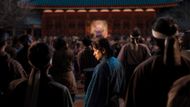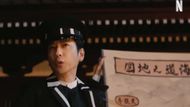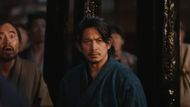The Netflix series Last Samurai Standing takes place in Japan during the Meiji Restoration period. The nation swiftly transitioned from antiquated customs to contemporary practices during this period. The story of this TV series illustrates how samurai battled to survive and lost their social standing.
Shujioro, the protagonist of Last Samurai Standing, plays the lethal game Kodoku in an attempt to win money & save his impoverished village & sick family. Each warrior's strength is put to the test in this dangerous game.
Last Samurai Standing portrays a compelling story of dignity, tragedy, and transformation in a society that no longer cherishes the past by fusing action with actual bravery.
Know More: Location and film set of Last Samurai Standing!
Know about the period setting of Last Samurai Standing:
The Meiji Restoration period setting

The setting of Last Samurai Standing is during the Meiji period, which began in the year 1868 when the emperor, Meiji, was installed again into power after the deadlock that was caused by the Tokugawa shogunate. The period involved the speed of modernization and westernization of Japan, since the nation, being part of the feudal system, underwent its turn into an industrial state.
During this era, the class of samurai was stripped of their power and status in the society. Former warriors lost their social privileges and were banned from carrying swords in 1876. The samurai were rendered useless as a number of them were reduced to poverty because of their failure to cope with the emerging modern world.
The Kodoku death game premise

The game that occupied the heart of the Last Samurai Standing is called Kodoku. The game was used in the Nara period. It is a Japanese folklore ritual in which insects are placed in a jar and consumed until only one is left. In the series, 292 warriors are assembled at nightfall at Tenryuji Temple in Kyoto, each being given a wooden tag that hangs around their neck. The participants have to steal tags from other players by defeating or killing them as they go on their journey to Tokyo for a month.
The route follows the historic Tokaido road with seven checkpoints, each requiring a specific number of tags to get through. The competitors are always watched by armed guards who will kill those not meeting checkpoint requirements and anyone who loses their own tag.
Protagonist Shujiro Saga's desperate mission

In Last Samurai Standing, Shujiro Saga experiences PTSD living as a poor farmer in the countryside and battles the battlefield of 1878. The disease spreads to Japan, where his young daughter dies of a fatal condition known as cholera, causing his son and wife to fall ill. Shujiro cannot afford medicine or even treatment.
Shujiro receives an invitation to compete in the Kodoku tournament and wins the cash prize, which transforms his life. He joins the dangerous contest to win money and help his family & village to fight against poverty & cholera. His story reminds me of a fight with homeless samurai who were trying to earn their living in modernized Japan.
Last Samurai Standing is a film that incorporates historical drama as well as intense action scenes. The story investigated what occurred when a whole social class suddenly lost its identity & mission. The violent conflict between old samurai traditions & contemporary industrial advancement is both spectacular.
The metaphor in the Kodoku death game is also captivating. Michihito had successfully reimagined this period drama for the audience while incorporating stunning sword battle choreography & real Japanese historical information.
Follow SoapCentral for more updates!
